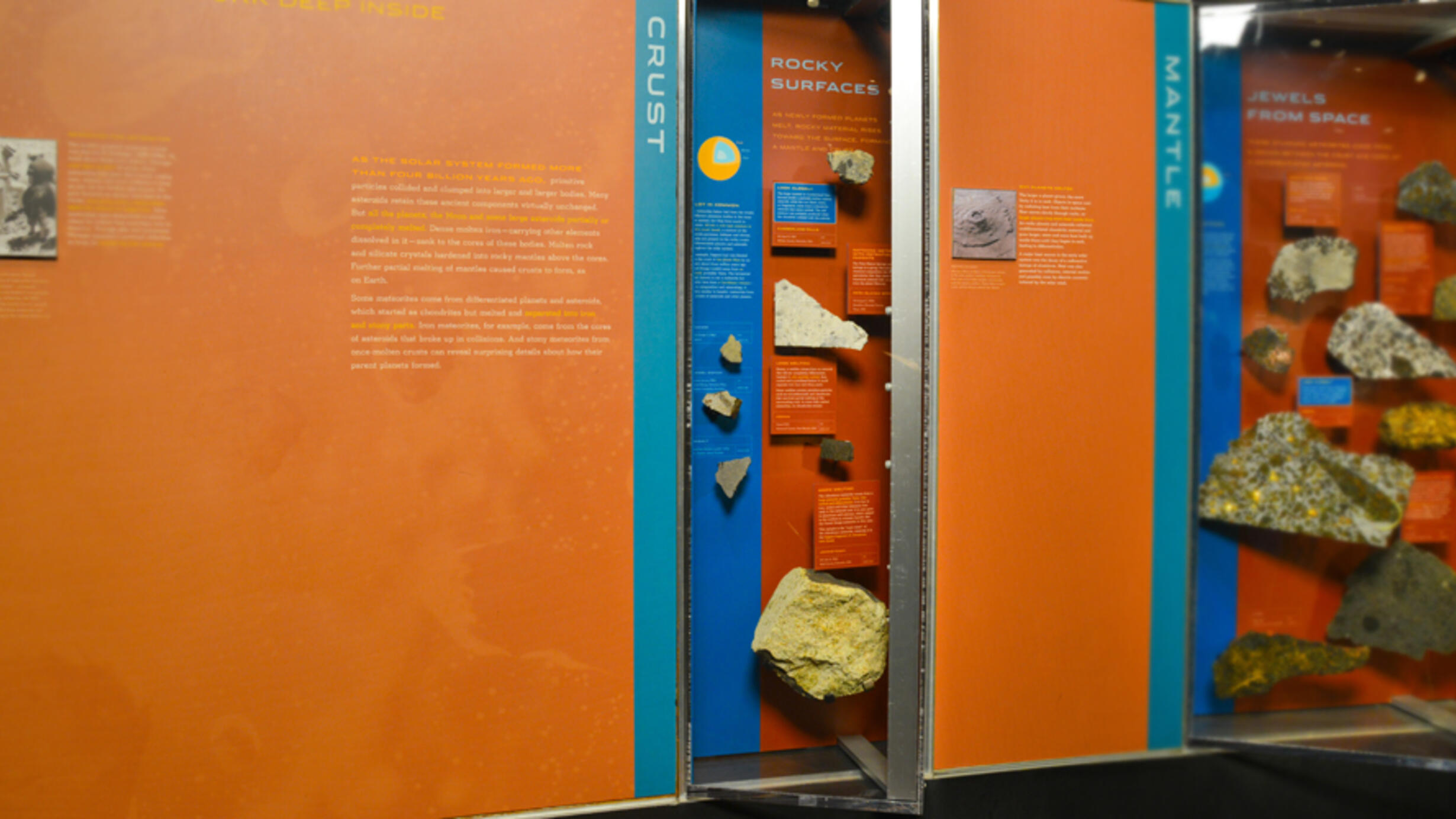Crust
Part of Hall of Meteorites.

As the solar system formed more than four billion years ago, primitive particles collided and clumped into larger and larger bodies. Many asteroids retain these ancient components virtually unchanged. But all the planets, the Moon and some large asteroids partially or completely melted. Dense molten iron-carrying other elements dissolved in it-sank to the cores of these bodies. Molten rock and silicate crystals hardened into rocky mantles above the cores. Further partial melting of mantles caused crusts to form, as on Earth.
Some meteorites come from differentiated planets and asteroids, which started as chondrites but melted and separated into iron and stony parts. Iron meteorites, for example, come from the cores of asteroids that broke up in collisions. And stony meteorites from once-molten crusts can reveal surprising details about how their parent planets formed.
Why Planets Melted
The larger a planet grows, the more likely it is to melt. Objects in space cool by radiating heat from their surfaces. Heat moves slowly through rocks, so larger planets trap more heat inside them. As rocky planets and asteroids collected undifferentiated chondritic material and grew larger, more and more heat built up inside them until they began to melt, leading to differentiation.
A major heat source in the early solar system was the decay of a radioactive isotope of aluminum. Heat was also generated by collisions, internal motion and possibly even by electric currents induced by the solar wind.